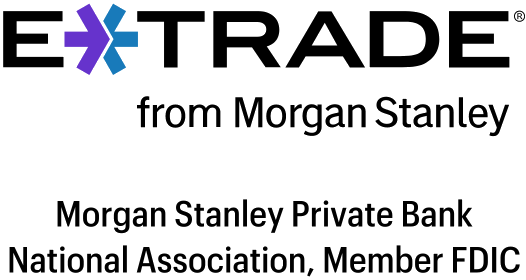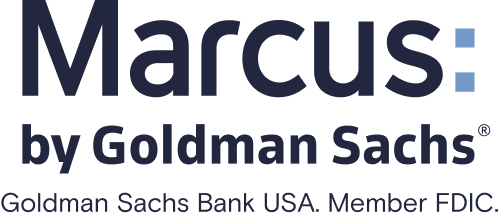Essential Banking Terms You Need to Know
Understanding common banking terms can help you with your finances. Here are 15 essential bank terms to know.

Many, or all, of the products featured on this page are from our advertising partners who compensate us when you take certain actions on our website or click to take an action on their website. However, this does not influence our evaluations. Our opinions are our own. Here is a list of our partners and here's how we make money.
Understanding basic banking and finance — and the terminology people use to talk about them — can make a big difference in your bank account balance.
Here are 15 banking terms you should know to manage your money better.
APR
Annual percentage rate. In the context of a loan, the APR represents the total cost of borrowing money (i.e., APR includes the loan’s interest rate as well as fees. By comparison, interest alone doesn’t include fees. Skip ahead to see the definition of interest.).
» Learn more: How does APR affect your mortgage?
APY
Annual percentage yield. The amount of interest you gain from keeping money in an account in a year, including compound interest. (Want additional details? Read more about why securing a high APY is important for your savings.)
» Compare top APYs: See our list of the best savings rates
Forbright Bank Growth Savings

4.00%
$0

Member FDIC
Varo Savings Account

5.00%
$0

Member FDIC
E*TRADE Premium Savings

3.50%
$0
Bank run
A bank run is what happens when depositors try to withdraw all of their money from a bank because they fear the institution will fail.
» Keep reading about bank runs
Basis point
A basis point is one-hundredth of a percent; 100 basis points is equivalent to 1%.
» Learn more: Find out how to use and how to calculate basis points
Checking account
An account at a financial institution into which you can deposit money and from which you can write checks for purchases. Most people use checking accounts to receive their wages and pay their bills.
» Level up your day-to-day banking with our best checking accounts
Certificate of deposit
Commonly known as a CD, an account into which you deposit a sum of money and agree to keep it there for a specified length of time. The account typically pays higher interest rates than standard savings accounts.
» Check out this month's best CD rates
ChexSystems
ChexSystems is a consumer reporting agency that collects information about closed consumer checking and savings accounts. A financial institution may review your ChexSystems report to assess your risk when you apply to open a new bank account.
» Everything you need to know: Find out how ChexSystems works
Compound interest
Interest that applies to the original deposit as well as any newly earned interest. For example, if you put $100 in an account that earns compound interest at 5% a year, in the next year you will earn 5% on $105. Noncompounding interest would continue to earn 5% on $100.
» See how your savings could pile up with our compound interest calculator
FDIC
The Federal Deposit Insurance Corp. An independent, government-run agency that insures customers’ bank deposits up to $250,000 if the bank fails. The National Credit Union Administration provides the equivalent protection for credit unions. (Read more about how FDIC insurance works.)
» Learn about the credit union version: Find out how NCUA insurance works
Interest
Interest is the amount charged for using money that isn’t yours. You can earn interest by keeping your money in a savings account (i.e., earning money for lending the bank your cash), and you may pay interest on loans you take out (i.e., the fee for borrowing money from a lender).
» Dive deeper: What is an interest rate? and APY vs. Interest Rate: What's the Difference?
Neobank
Neobanks are financial technology firms. They’re usually partners with a bank, which allows them to provide federally insured bank accounts.
» Know the pros and cons: Get a complete explanation of what a neobank is
Overdraft fee
A fee incurred when your checking account doesn’t have enough funds to cover a payment that is requested. The financial institution may pay what your account lacks, after which your account may have a negative balance. (Here's more information on how much banks charge for overdrafts.)
Returned item fee
A bounced-check fee charged to the person trying to deposit the check. It can be charged if there are insufficient funds in the check writer’s account or if the account is closed.
Routing number
A nine-digit number that identifies your financial institution. Larger banks may have multiple routing numbers that are based on the geographic location where the account was opened. (Read more about routing numbers and how to find yours).
»MORE: Is today a bank holiday?
Savings account
Typically, an interest-bearing account used to hold money for short- or long-term goals or emergencies. You can add to this account at any time, but certain types of withdrawals may be limited to six per month.
There is a wide range of interest rates available for savings accounts, and online banks tend to have higher rates than national banks.
» Want to earn the highest rates? Check out the best high-yield online savings accounts
Learn more banking terms
Expand your knowledge by learning more about these key banking topics and terms:
Basic banking: What Is a Bank? || What Is a Bank Statement? || What Is a Debit Card? || What Is a Deposit? What Is Online Banking?
Bank accounts: What Is a Cash Management Account? || What Is an Emergency Fund? || What Is a High-Interest Savings Account? || What Is a Rainy Day Fund? || What Is a Rewards Checking Account? || What Is Second Chance Checking?
Bank fees: What Is a Nonsufficient Funds (NSF) Fee? || What Are Overdraft Fees? || What Is a Stop Payment Fee?
Banking and the government: What Is the Federal Funds Rate? || What Is the Federal Reserve?
Bank transactions: What Is an ACH Transfer? || What Are Automatic Bill Payments? || What Is Mobile Check Deposit? || What Is a Money Order? || What Is Online Bill Pay Service? || What Is a Wire Transfer? || What Is Zelle?
Checks and checking accounts: What Is a Checking Account? || What Is a Bounced Check? || What Is a Cashier's Check? || What Is a Certified Check? || What Is a Personal Check?
Certificates of deposit: What Are Bump-Up CDs and Step-Up CDs? || What Is a CD (Certificate of Deposit)? || What Is a CD Early Withdrawal Penalty?
Credit Unions: What Is a Credit Union? || What Is a Shared Branch Credit Union?
Other banking topics:What Is a Prepaid Debit Card? || What Is Overdraft Protection? || What Are Negative Interest Rates? || What Is a Safe Deposit Box?















